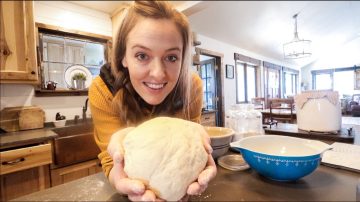Chocolate Tempering Tutorial
Recipe Overview
Overview
Tempering chocolate can seem daunting, but this tutorial breaks it down into manageable steps. Sally guides you through the process, emphasizing the importance of temperature control. The method shown is accessible for home cooks, requiring just a few tools and ingredients. The key is to melt the chocolate slowly and ensure it reaches the right temperatures for proper crystallization.
One of the standout moments is when Sally explains the significance of using high-quality chocolate. The fewer ingredients, the better the chocolate will temper. This is crucial for achieving that glossy finish and satisfying snap that everyone loves in chocolate bars. The tutorial also highlights the importance of cleanliness when working with molds, ensuring that no residue affects the final product.
As you follow along, you’ll learn not just the how-to but also the science behind tempering. This knowledge empowers you to experiment with different types of chocolate, whether you’re making bars, decorations, or filled chocolates. With practice, you’ll gain confidence in your chocolate-making skills, turning out beautiful treats that impress friends and family.
Overall, this tutorial is a fantastic resource for anyone looking to master the art of chocolate tempering. With clear instructions and helpful tips, you’ll be well on your way to creating stunning chocolate creations at home.
Recipe Details
Steps & Tips
Tip: Use good quality chocolate with fewer ingredients for better results.
Tip: If your chocolate doesn't temper correctly, you can remelt it and start again.
Hold the mold above a saucepan of water and use steam to clean it with cotton wool.
Begin the tempering process using the seeding method.
Tip: Wipe your molds with cotton wool instead of washing them to avoid scratches.
Bring water in a saucepan to a boil, then turn off the heat.
Tip: Avoid getting water or steam into the chocolate to prevent it from seizing.
Add 300g of dark chocolate to a metal bowl and place it in the hot water.
Tip: Use a thermometer to ensure the chocolate melts between 45 and 50°C for proper tempering.
Stir the chocolate and check the temperature, ensuring it reaches between 45 and 50°C.
Tip: Stir the chocolate continuously to help temper it effectively.
Add a handful of tempered chocolate chips to the melted chocolate and stir.
Continue stirring until the chocolate reaches 31°C.
Tip: If the chocolate is not setting in the mold, it may not be tempered correctly.
Dip a spoon in the chocolate and leave it upside down to check if it sets.
Pour the tempered chocolate into a piping bag and snip the end.
Tip: Add toppings like sprinkles or salt quickly before the chocolate sets.
Pipe the chocolate into the mold quickly and tap to remove air bubbles.
Leave the chocolate at room temperature to set.
Tip: Smears of cocoa butter on chocolate do not indicate it hasn't tempered correctly.
Check if the chocolate has set and remove it from the mold.
Tip: Reuse leftover chocolate in the piping bag by letting it set and then removing it.
Ingredients
Ingredient: Dairy
→ Substitution: Almond Milk
Ingredient: Soy
→ Substitution: Coconut Cream
Skill Level
Frequently asked questions
Below you will find answers to the most common questions about this recipe.
Got a Recipe Question? Ask Away!
Interesting Tidbits
- •Tempering chocolate involves reaching precise temperatures to ensure the cocoa butter crystals are in the correct formation.
- •Using a thermometer is crucial for accurate temperature control during the tempering process.
- •Chocolate that is tempered correctly will have a shiny appearance and a satisfying snap when broken.
- •Humidity can affect the tempering process, as moisture and chocolate do not mix well.
- •You can use leftover tempered chocolate for seeding to help bring melted chocolate back into temper.




















